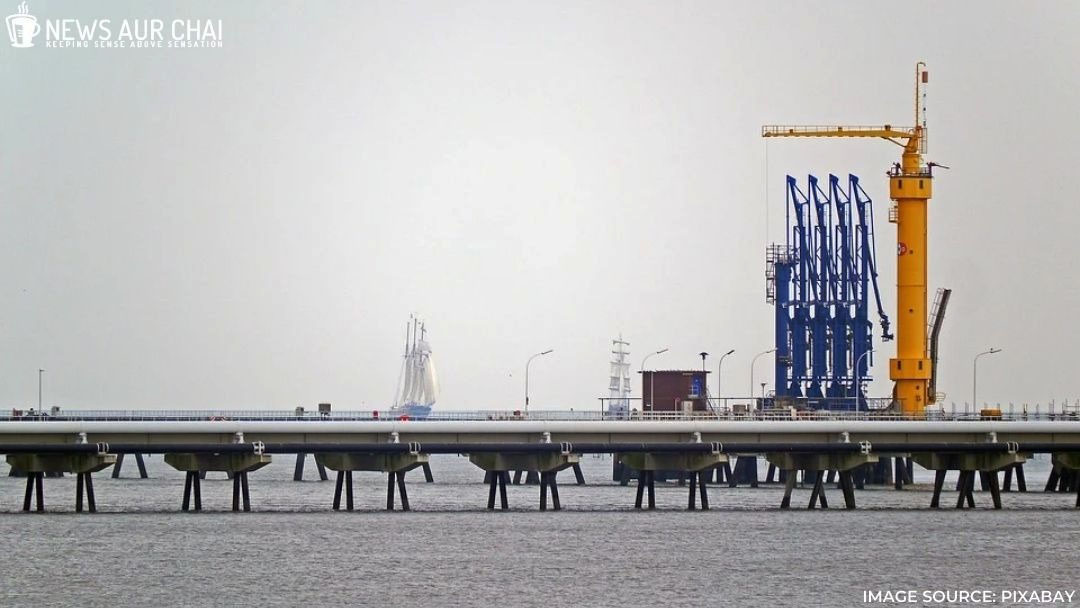
For the first time in history, the US oil price turns negative as producers are now paying buyers to take their stock, as they fear that storage capacity would run out by May. This persisting turmoil has lead to the oil price, falling to an 18- year low.
As lockdowns across the world are keeping people inside, the demand for oil has fallen drastically. This has left oil firms with no choice but to rent tankers to store the surplus, and that has forced the price of US oil dip to negative.
The pain in oil markets is carried over to stocks, with Asian and European indexes, and US stock futures, all in red as on April 21.
The West Texas Intermediate (WTI) oil futures expiring in May, witnessed a steep fall in price from the benchmark set for US oil, as low as minus 37.63 dollars a barrel as on April 21.
How it all began?
On April 20, the oil price slumped drastically, partly due to the technicality of the global oil market. Traders were keen to offload the holdings to avoid having to take delivery of the oil and incur storage costs.
The oil industry has been striving with both decreased demand and in-fighting among producers about reducing output. Earlier this month, OPEC members, Saudi Arabia and Russia, finally agreed to a record deal to slash global production by about 10 per cent. The deal was the most massive cut in oil production ever to have been accepted. However, it failed to convince traders that the supply glut will ease any time soon.
Furthermore, analysts say the cuts were not big enough to make a difference as the world has more crude oil than it can use. They noted that this cut would only be reflected in May.
Until the lockdown is eased, this issue will prevail and will cause a further fall in price. The bouncing back of the global economy and the oil market will depend upon how the health crisis unfolds.
The black gold is now a curse.
Oil has been known as the black gold since ages. The main reason behind this was, as when the price is high, the revenue from oil keeps the companies and governments which depend on it run smoothly.
However, looking into the current scenario having oil can be a curse rather than a blessing.
The countries which were heavily dependent on their oil production for fuelling their economy are struggling to survive due to the decline in oil price.
Impact of oil market turmoil on India
Indian stocks opened weak as on April 21, slipping over 3 per cent, which is in line with the performance of the US Dow Jones overnight. As on April 22, crude oil price fell below zero for the first time in history, causing the oil market to tumble further.
As per experts, the efforts to ramp up the global economy is a challenging task, as the lack of employees plus the drop in demand may hit the industrial activities heavily.
Kotak Institutional Equities said the recent steep decline in spot and one-month forward prices of WTI and other landlocked crude in the US exhibit perils of the storage limits amid a sharp drop in inland demand and high, albeit gradually moderating, production.
Experts say that India can’t have a better opportunity than now to fill its storage capacity with cheap crude oil. However, what is challenging for India is to ship the oil to storage facilities before the monsoon breaks.
India Strategic Petroleum Reserve (SPR) is only 37 million barrels that are equivalent to 13-16 days usage at the current rate of consumption.
Besides, each cavern can take only a specific grade of crude so that consistency is maintained. Though India has only 5.33 million tonnes (mt) of SPR capacity across three locations — 1.3 mt at Visakhapatnam, 1.5 mt at Mangaluru, and 2.5 mt at Padur (Karnataka) – what is crucial is to make full use of this cheap oil opportunity while it lasts.
How oil price dip has affected other countries?
In early March, the International Energy Agency (IEA) had warned that the collapse in the oil price would affect the revenue of the “vulnerable” producing countries by 85 per cent. The Paris-based agency stated that the coronavirus global lockdown and the unstable oil war between Russia and Saudi Arabia are the primary reasons.
Furthermore, IEA warned that Ecuador, Nigeria, and Iraq could be worst hit, with earnings falling by between 50 per cent and 85 per cent – and that was assuming oil prices of 30 dollars a barrel. Currently, it’s less than 20 dollars a barrel.
The IEA added that OPEC members such as Algeria and Angola were also at risk because of their high dependence on oil and gas revenues.
In a special report on the crisis by IEA, it further stated that many countries were less prepared this time to respond over a crude oil slump than the 2014 decline in price.
As per the agency, Iraq will be the worst hit as fuel accounts for 98.5 per cent of Iraq’s export earnings (gems, precious metals, fruit, and nuts make up most of the rest). Iraq will now face a monthly 4 billion dollar budget deficit even to meet civil servants’ salaries and pensions and is likely to face further pressure on its health service.
The agency also pointed out that Nigeria’s economy is less prepared to tackle a “price shock” than five years ago, because per capita GDP has shrunk by almost a third.
Fatih Birol the Executive Director of the International Energy Agency on April 20 tweeted suggested three ways to tackle the drop in oil demand.
We continue to see extraordinary turmoil in oil markets in this "Black April" for the industry. The OPEC+ supply cut is a solid start but insufficient to rebalance the market immediately due to the scale of the drop in demand.
3 suggestions from @IEA: pic.twitter.com/SWxlnIFekk
— Fatih Birol (@fbirol) April 21, 2020
If the global lockdown further extends, the world will move from the predicted recession to depression. It is now a choice between life and livelihood for many countries.






One Comment